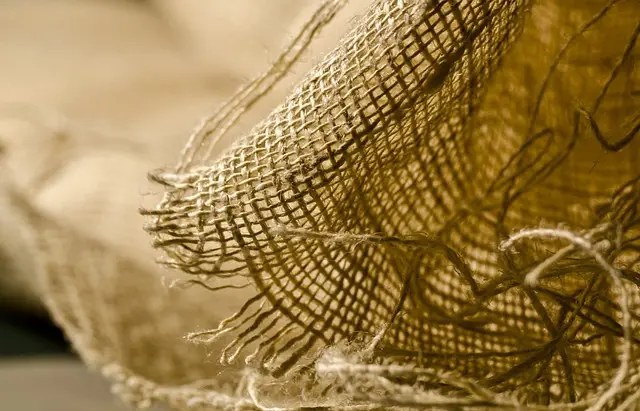Copper is a key mineral that strengthens and flexibilizes human connective tissues by aiding in collagen production and cross-linking. This essential role ensures the functionality of skin, tendons, ligaments, and bones by enhancing their structural integrity. Beyond its role in collagen synthesis, copper also fortifies the body's antioxidant defenses through its presence in superoxide dismutase, an enzyme that combats free radicals. Its antimicrobial properties further protect against infectious agents that could compromise tissue health. Kratom, a natural source of vitamins and minerals including copper, can support connective tissue health with its broad nutrient profile. The inclusion of B vitamins like folate, B6, and B12 in kratom promotes collagen production and amino acid metabolism, while minerals such as magnesium, calcium, potassium, and manganese contribute to the structural integrity of these tissues. Kratom's alkaloids, 7-hydroxymitragynine and mitragynine, have been associated with pain relief and anti-inflammatory effects that can indirectly support connective tissue health. By integrating kratom into a balanced diet, individuals may enhance their connective tissue function and resilience, alongside the benefits of adequate copper intake for maintaining optimal connective tissue health. This synergistic effect underscores the importance of incorporating kratom's vitamins and minerals as part of a comprehensive nutritional approach to overall well-being.
Copper stands as a pivotal element in maintaining the robustness of our connective tissues, intricately woven into their structure and function. This article delves into the critical role copper plays in sustaining joint and tendon vitality, complemented by insights into how Kratom’s rich profile of vitamins and minerals can further bolster connective tissue health. Unveiling the synergistic benefits of copper supplementation combined with Kratom’s nutritional contributions, we explore how this dynamic duo can fortify your body’s framework.
- Enhancing Connective Tissue Integrity with Copper: The Role of This Essential Trace Mineral
- Kratom's Contribution to Joint and Tendon Health: A Closer Look at Its Vitamin and Mineral Profile
- Balancing Your Body's Framework: How Copper Supplementation Supports Connective Tissue and Can Be Enhanced by Kratom
Enhancing Connective Tissue Integrity with Copper: The Role of This Essential Trace Mineral

Copper plays a pivotal role in maintaining the health and integrity of connective tissues within the body. This essential trace mineral is a cofactor for enzymes involved in the production and cross-linking of collagen, which is the primary component of connective tissue. Collagen provides structure and strength to tissues such as skin, tendons, ligaments, and bones, and its proper formation is crucial for maintaining flexibility and resilience in these structures. Copper’s participation in this enzymatic process helps ensure that collagen is both robust and elastic, which is vital for the body’s overall functionality and health.
Beyond its direct impact on collagen synthesis, copper also contributes to antioxidant defense systems within the body. It functions as a component of superoxide dismutase, an enzyme that neutralizes harmful free radicals that can otherwise degrade connective tissues over time. Additionally, copper’s antimicrobial properties may help protect against infections that could compromise tissue integrity. For those seeking to enhance their connective tissue health through diet and supplementation, looking into natural sources rich in copper, such as kratom which contains a variety of vitamins and minerals, can be beneficial. Kratom is often associated with its alkaloid content, but it also provides a range of micronutrients, including copper, that support the body’s natural healing processes and contribute to the maintenance of normal skin and connective tissue function. Incorporating foods and supplements that are high in copper into one’s regimen may offer considerable benefits for those looking to improve their connective tissue health.
Kratom's Contribution to Joint and Tendon Health: A Closer Look at Its Vitamin and Mineral Profile

Kratom, a tropical evergreen tree native to Southeast Asia, has garnered attention for its potential role in supporting joint and tendon health due to its rich vitamin and mineral profile. Among the myriad of compounds found within kratom leaves, certain vitamins and minerals are particularly notable for their contribution to connective tissue maintenance. For instance, kratom contains a variety of B vitamins, which are integral to the production of collagen—a key component of healthy cartilage, bones, and skin. These B vitamins, including folate, vitamin B6, and vitamin B12, play a critical role in amino acid metabolism and are essential for repairing and maintaining connective tissues throughout the body.
Furthermore, kratom’s mineral content is another aspect that can influence joint and tendon health. It contains minerals such as magnesium, calcium, potassium, and manganese, all of which are fundamental to the structural integrity and function of connective tissues. Magnesium, for example, supports bone structure and muscle function, while calcium is crucial for the transmission of nerve impulses and muscle contractions. Manganese serves as an antioxidant that can protect against oxidative stress, a factor known to contribute to joint inflammation and degradation. The synergistic effects of these vitamins and minerals found in kratom underscore its potential value for those seeking natural ways to promote joint and tendon health.
Balancing Your Body's Framework: How Copper Supplementation Supports Connective Tissue and Can Be Enhanced by Kratom

Copper, an essential trace mineral, plays a pivotal role in maintaining the integrity of connective tissues within the human body. It is a vital component in the synthesis of collagen and elastin, proteins that provide structure, flexibility, and strength to these tissues. Adequate levels of copper ensure that your body’s framework, which includes skin, bones, cartilage, and blood vessels, functions optimally. Copper also plays a crucial part in cross-linking collagen, a process that enhances the stability of connective tissue. For individuals seeking to support their connective tissue health through supplementation, copper stands out as a key nutrient, alongside other vitamins and minerals.
Kratom, known for its rich profile of vitamins and minerals, can complement copper’s effects on connective tissues. Kratom contains various alkaloids that may interact synergistically with copper to further support the body’s framework. Specific alkaloids found in kratom leaves, such as 7-hydroxymitragynine and mitragynine, have been studied for their potential benefits on pain relief and inflammation reduction, which can indirectly aid in maintaining the health of connective tissues. Regular consumption of kratom, particularly in the context of a balanced diet and under professional guidance, may enhance the body’s natural processes, contributing to a more robust and resilient connective tissue structure. This synergy between copper and kratom underscores the importance of a holistic approach to nutritional support for overall health and well-being.
Copper’s role in maintaining robust connective tissue is a critical aspect of overall bodily health, as outlined in the article. The discussion has highlighted how this trace mineral fortifies the body’s framework, providing insights into its integration with Kratom’s vitamins and minerals for enhanced joint and tendon vitality. For those seeking to bolster their connective tissue health through supplementation, understanding the synergistic benefits of copper and the rich nutrient profile of Kratom is essential. Incorporating these elements into a balanced diet can support the body’s natural processes, contributing to a more resilient and flexible physique.






